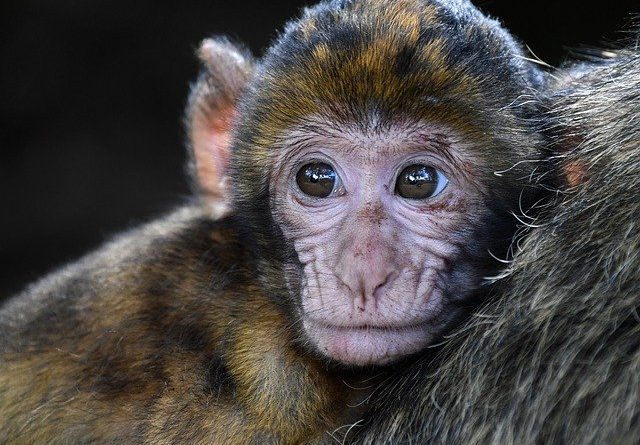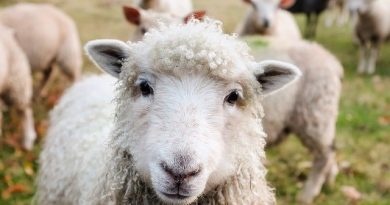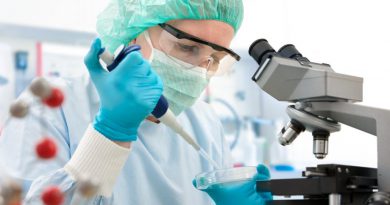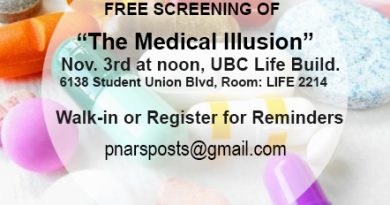COVID-19 Exposing Flawed Moral Framework Behind Animal Testing
We talk about the “new normal” to describe life after COVID-19, but perhaps biomedical research itself may also be ready for a new normal, one that excludes needless animal suffering.Reading Time: 4 minutes
Two questions stand out as we process the tragedy and uncertainty of the COVID-19 pandemic: how did this start? And how do we get out? While both questions lack certainty at this point, both the likely origin story and our proposed solutions speak volumes about our approach to human health beyond this single pandemic. They also have one thing in common: our use of animals, making transparent the ever-present tie between our approach to human health and the ethics of our animal use.
COVID-19, the disease resulting from the SARS-CoV-2 virus, is just one of many human infectious diseases that originate in animals. Transmission of these zoonotic diseases has been linked to human activity that increases the frequency of inter-species contact required for a jump to occur. While both the intensification of modern animal agriculture as well as deforestation likely play a role, the crowded, unsanitary conditions in which we raise and sell animals for food can foster the development of viral mutations necessary for transmission. While we cannot say for certain where SARS-CoV-2 originated, early human cases point to a connection to markets in China that house and sell animals for food. Though, it should be noted that these wet markets are not that dissimilar from our systems of animal agriculture in the US in their physicality, morality, and potential contribution to zoonotic outbreaks.
Because of this, many have called for the closing of wet markets. This makes a lot of sense: no markets mean no playground for the virus to hone its human jumping skills, which can mean no pandemic. Of course, the risk of pandemics won’t go to zero in the absence of these markets, but it is safe to say that we can drastically reduce the likelihood of a future COVID-19-like situation by changing our food system. This is a preventive measure that requires social investment—which is no easy feat—but the cost of this investment looks trivial juxtaposed to the enormity of death and economic hardship we are experiencing now.
For those of us with one eye toward animal welfare, it is very easy to see the mutually beneficial connection between human health and animal ethics. Increasing our animal welfare standards in agriculture, or even abstaining from meat when possible, can both increase human health and animal welfare. It is a win-win for humans and animals.
But what may be less clear is the connection between preventive measures like these and the welfare of another group of animals: the animals in our labs.
Though we have curbed the rapid spread of disease through social distancing mandates, efforts are now focused on the development of new treatments and vaccines, which have historically relied heavily on animal research. Animals, ranging from mice to ferrets to non-human primates, currently serve as models of viral infection, readouts of drug and vaccine efficacy and toxicity, and factories that produce reagents like those used for some serological testing. As is always the case in biological research, their use is subject to ethical consideration.
Our current moral framework asks us to weigh the costs of experimentation to lab animals (both suffering and death) with the potential, yet always uncertain, benefits it generates for humans. Few of us would look at the acute severity of COVID-19 and not see that the potential benefits dwarf the costs. Many would still make this calculation despite knowledge of the widespread failures in translating results from animal models to humans. Approximately 90 percent of clinical trials fail after success in animal models. Even still, our justification would go something like this: all information is valuable information because some unknown fraction of it will pave the way out of the corner we’ve backed ourselves into.
But this calculation ignores that prevention was always an option.
Yes, hindsight is 20/20; but hindsight is what we need to avoid the repetition of history. COVID-19 may be one of the worst public health crises many of us have witnessed in our lifetime, but at its core is a blueprint no different than many of our other health battles.
As with all complex scientific problems—of which human health is a particularly knotty one—we must make choices about the best approach and prioritize our resources accordingly. When it comes to human health, as COVID-19 exemplifies, we prioritize the treatment of disease after the fact rather than the prevention of disease through more fundamental and proactive social changes. This reactionary approach is a consequence of our broader tendency to conceptualize disease as a biological problem in isolation from its greater social context. This foregrounds basic biological research in our biomedical enterprise at the expense of alternative preventive approaches.
Many of our primary health battles—cancer, diabetes, cardiovascular disease, for example—contain both biological and social dimensions; but for each of these diseases, as with COVID-19, our fight prioritizes its biology. While we increase investment in biological research to find better treatments, including those that use lab animals, we do far less to address the social causes of disease. Of course, we can (and should) point to the success of treatments born out of biology; but, it would be a mistake to ignore the historical benefit of preventive measures to human health and their untapped potential moving forward.
This doesn’t mean that biological research is obsolete; but it does mean that its importance must be judged in relation to epidemiology and public health, economic policy, food policy, environmental policy, social justice, and the like. Disease is often not just biology gone awry; and the health of our population will benefit from re-prioritizing our biomedical approach to recognize this. The animals in our labs will benefit as well.
Our belief in the centrality of animal research to address disease assumes that our treatment-centric approach is the best, if not the only way to effectively promote human health. As we divert our resources to an approach with prevention at its core, we will naturally divest in animal research, reducing the total number of animals used. To prioritize the social dimension of disease would effectively reduce the cost to animals while simultaneously increasing the benefit to humans. Again, this is a win-win for humans and animals.
As we continue to find our way out of this pandemic, it is important not to lose sight of its origin. COVID-19 is a tragic lesson in the effects of deemphasizing preventive health measures in favor of biological solutions; and it is a lesson in how this trade-off warps our justification of animal experimentation by creating an inflated sense of necessity. We talk about the ‘new normal’ to describe life after COVID-19, but perhaps biomedical research itself may also be ready for a ‘new normal.’ And while the proposed shift from a treatment- to prevention-centric approach to human health does not require a rethinking of the cost/benefit framework we currently use to guide our use of animals in research, it is possible that as we decrease our reliance on lab animals, we can open our eyes to new moral possibilities as well.
From Sentient Media, posted on June 8, 2020 at: https://sentientmedia.org/covid-19-exposing-flawed-moral-framework-behind-animal-testing/?utm_source=Sentient+Today&utm_campaign=0831284865-EMAIL_CAMPAIGN_2020_06_15_08_24&utm_medium=email&utm_term=0_5b050108b9-0831284865-61111405




